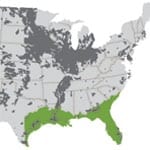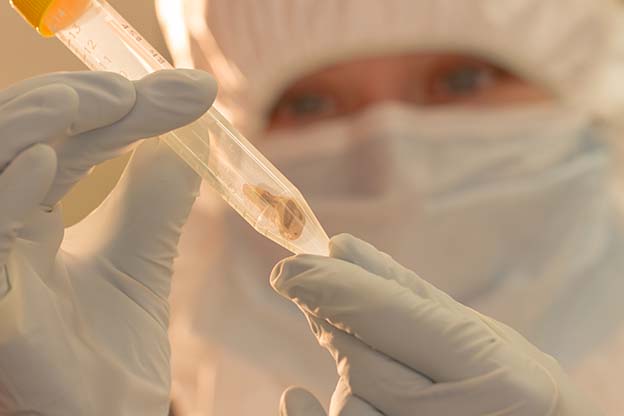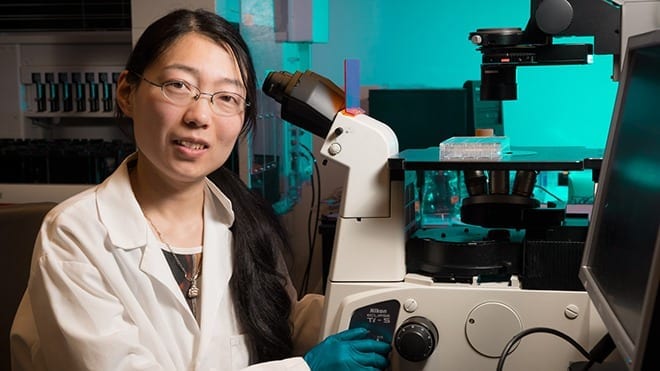
The researchers conclude that their technique could greatly speed up the identification of other microbes that could produce large amounts of bio-oil.
While the debate over using crops for fuel continues, scientists are now reporting a new, fast approach to develop biofuel in a way that doesn’t require removing valuable farmland from the food production chain. Their work examining the fuel-producing potential of Streptomyces, a soil bacterium known for making antibiotics, appears in ACS’ The Journal of Physical Chemistry Letters. The method also could help researchers identify other microbes that could be novel potential fuel sources.
Ariane Deniset-Besseau and colleagues point out that with the rise in oil prices in recent years, the search has been on for alternative fuels. Though plants such as soy and corn have been popular, the honeymoon ended as people realized how much arable land they were taking up. So now, researchers are seeking additional sources, including bacteria. Streptomyces has become a candidate in this search. It can make and store large amounts of oils called triacylglycerols (TAGs), which are direct precursors of biodiesel. Also, manufacturers already know how to grow vast amounts of it because pharmaceutical companies use the versatile bacterium to produce life-saving antibiotics. To better understand these microbes’ potential as a fuel source, Deniset-Besseu’s team wanted to explore how Streptomyces stores TAGs.
They used a novel laboratory instrument that combines an atomic force microscope with a tunable infrared laser source. This instrument allows researchers to determine how and where the bacteria store TAGs. Some strains hardly accumulate any oil, whereas others stored large amounts of oil in a way that might be easy to harvest. The researchers conclude that their technique could greatly speed up the identification of other microbes that could produce large amounts of bio-oil.
The Latest on: Bio-oil
[google_news title=”” keyword=”bio-oil” num_posts=”10″ blurb_length=”0″ show_thumb=”left”]
via Google News
The Latest on: Bio-oil
- bluebird bio Reports First Quarter 2024 Results and Highlights Operational Progress and 2024 Guidanceon May 9, 2024 at 3:59 am
SOMERVILLE, Mass., May 09, 2024--bluebird bio, Inc. (NASDAQ: BLUE) ("bluebird bio" or the "Company") today reported first quarter results and business highlights for the quarter ended March 31, 2024, ...
- Trendy olive oil brand Graza is cracking open a new way to refill its iconic bottleson May 8, 2024 at 5:00 pm
With its clever refill cans, the go-to olive oil for TikTok chefs and shoppy shops is making a play for sustainability-minded consumers—with characteristic playfulness. In the two years since Graza ...
- Oil (WTI) Priceon May 8, 2024 at 5:00 pm
1 Barrel ≈ 158,98 Liters Oil (WTI) Price Per 1 Liter 0.50 USD 1 Barrel = 336 Pint Oil (WTI) Price Per 1 Pint 0.24 USD 1 Barrel = 42 Gallons Oil (WTI) Price Per 1 Gallon 1.89 USD 1 Barrel ≈ 0 ...
- Bio-Rad (BIO) Q1 Earnings Surpass Estimates, Margins Downon May 8, 2024 at 5:17 am
Bio-Rad Laboratories, Inc. BIO posted first-quarter 2024 adjusted earnings per share (EPS) of $2.29, beating the Zacks Consensus Estimate by 12.3%. However, the bottom line declined 31.4% from the ...
- Suspicions of Fake China Cooking Oil Alarm US Biofuel Industryon May 7, 2024 at 3:48 pm
China is flooding the US with used cooking oil that the biofuel industry says may be tainted, hurting American farmers and President Joe Biden’s push to promote climate-friendly energy.
- Magnolia Oil & Gas Corp (MGY) Q1 2024 Earnings: Aligns with EPS Projections Amidst ...on May 7, 2024 at 2:35 pm
Reported at $97.6 million for Q1 2024, exceeding estimates of $92.26 million. Earnings Per Share (EPS): Achieved $0.46, meeting the analyst estimate. Revenue: Total revenue reached $319.42 million, ...
- Best oil stocks of May 2024on May 6, 2024 at 4:59 pm
Please view our full advertiser disclosure policy. TotalEnergies is a French integrated oil and gas company and one of the largest oil majors in the world. In 2023, it reported $35.9 billion in ...
- Biofuels Have Heating Oil Industry on Net-Zero Trackon May 2, 2024 at 11:13 am
The Northeast heating oil industry is on track to achieve the ambitious goals outlined in the Providence Resolution, a commitment to reduce greenhouse gas emissions.
- Coconut Oil Won’t Keep Pests Off Your Houseplants (and What to Use Instead)on May 1, 2024 at 11:00 am
Coconut oil shouldn't be used to deter pests on your indoor plants or as a way to condition or clean leaves. Instead, use Neem oil and castile soap.
- $5.6 million settlement proposed for consumers in home heating oil suit against Peterson Oilon April 29, 2024 at 6:58 pm
Peterson Oil is accused of of misrepresenting the amount of biodiesel mixed with the heating oil sold to consumers, causing sudden shutdowns and damage to heating equipment.
via Bing News










